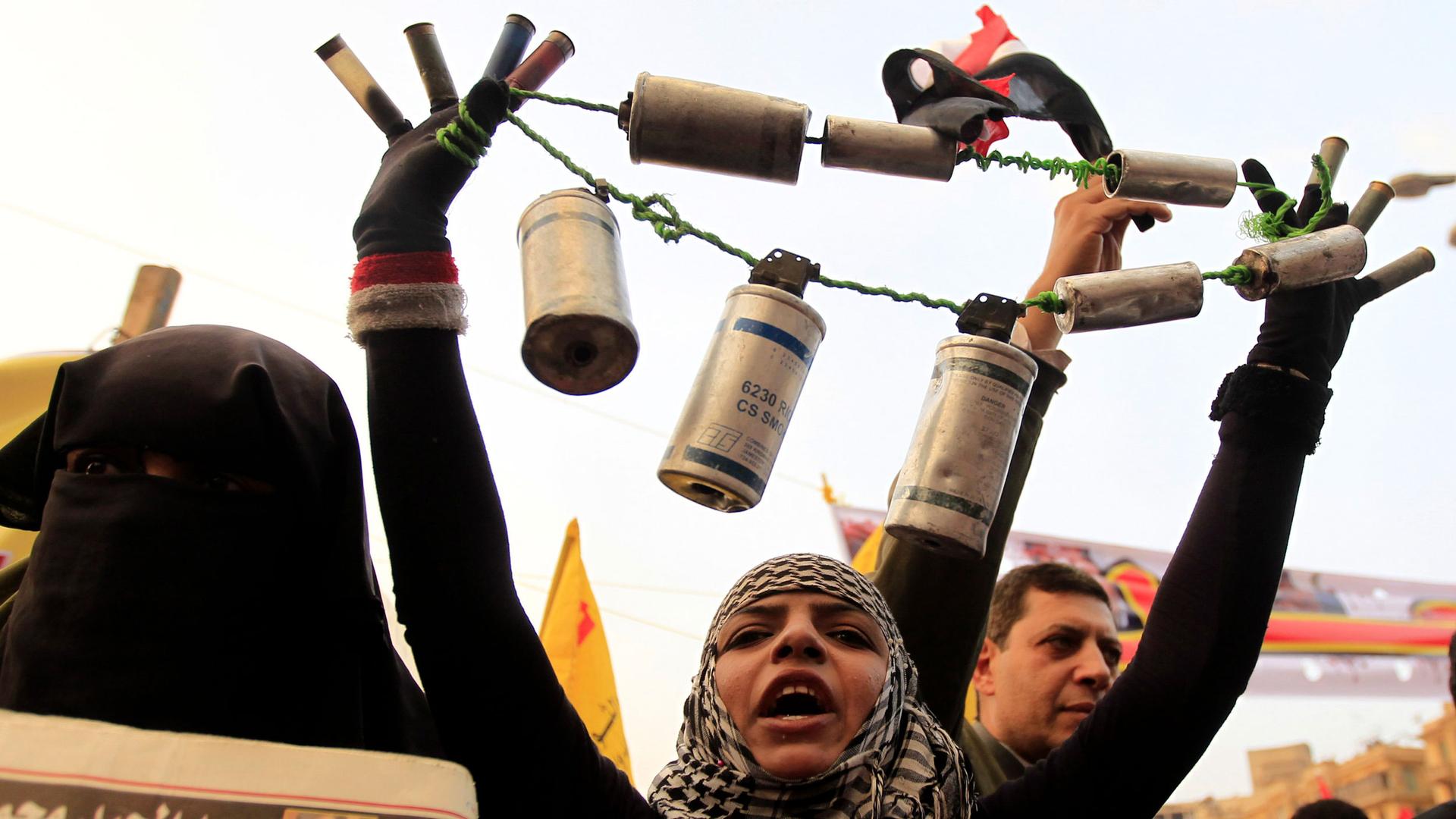The global tear gas business is booming. It’s complicated.
An anti-Mursi protester holds empty tear gas canisters that were shot by the riot police during a protest at Tahrir Square in Cairo in November 2012. On the chain of canisters is one canister that came from Combined Systems, Inc., one of the world’s largest tear gas manufacturers.
A version of this story previously aired at WESA.
On the surface, Noor Noor and Terry Burns don’t have much in common. The former is a 28-year-old student at Cambridge, getting a degree in environmental conservation that he plans to use back home in Cairo, Egypt. The latter sells lawn ornaments and homegrown vegetables out of her house in the rolling farmlands of Jamestown, Pennsylvania, population 617. They’ve never met.
But Noor and Burns are linked by the global trade in nonlethal weapons, a growing industry that burst into the headlines this week when the US Border Patrol tear gassed asylum-seekers on the country’s southern border. It’s the most recent, high-profile incident in a decade that has seen rising use of tear gas around the world.
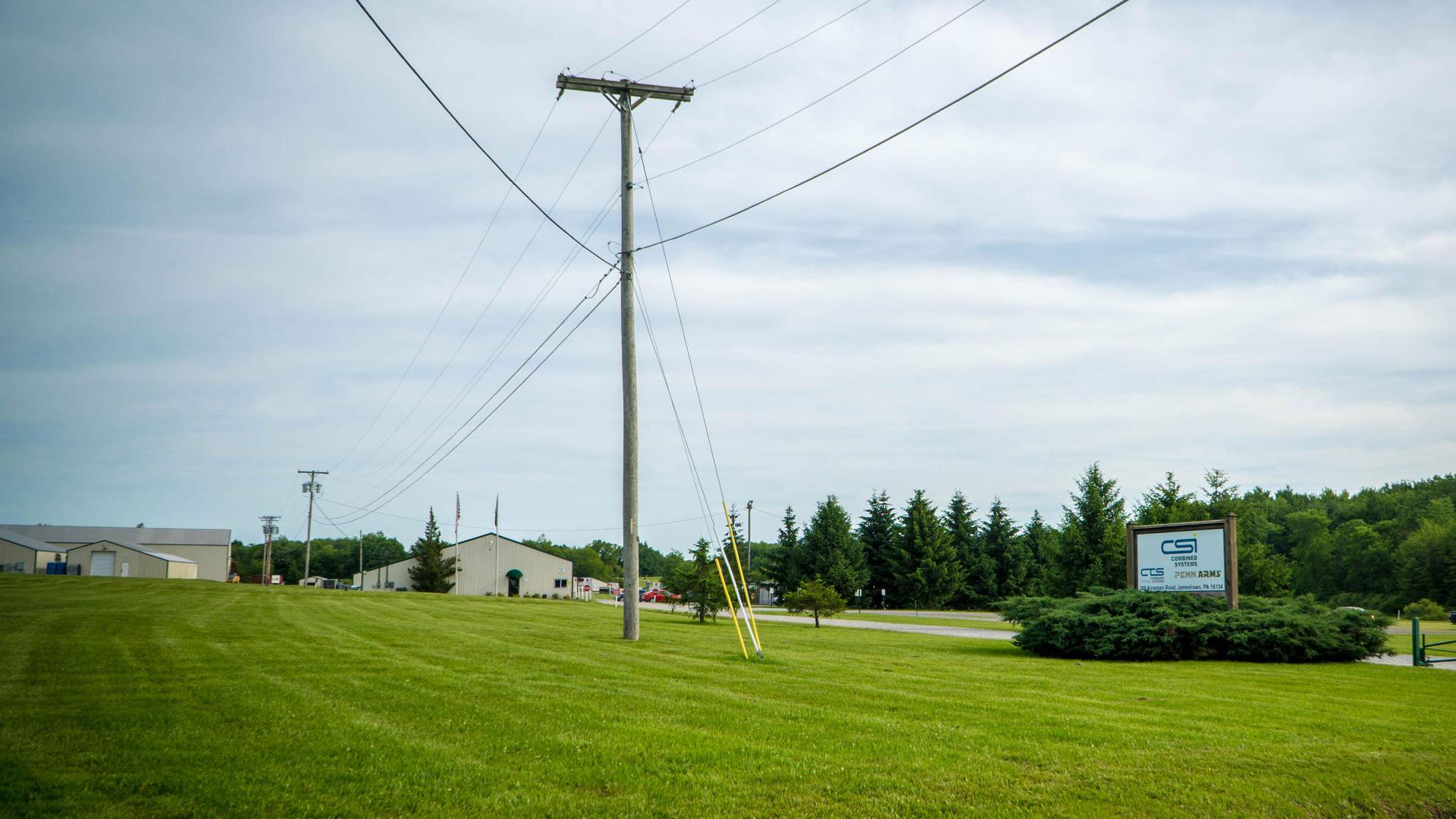
Noor’s first interaction with the weapon was on Jan. 25, 2011, the first day the Egyptian uprising took hold in Cairo’s Tahrir Square. At 20 years old, he’d been at political demonstrations before, but he’d never seen this many people in the streets and never a group this diverse. The regular use of tear gas — that was new, too.
“At the beginning, it was greeted almost with curiosity: ‘Will this gas really make you cry?’” Noor said.
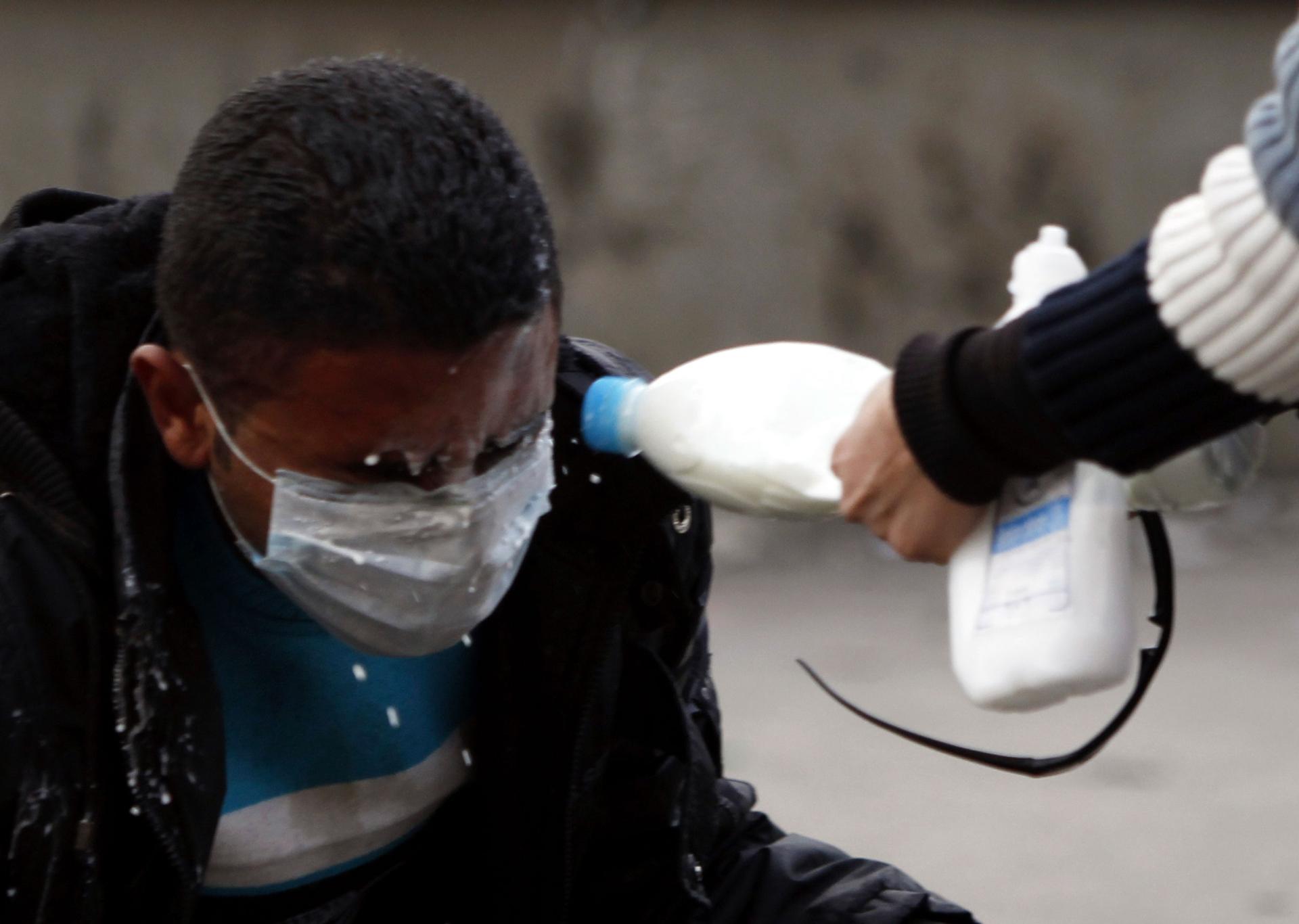
Getting gassed by security forces trying to dispel the protesters didn’t just make him cough and cry, though. It made his stomach clench up. He saw others pass out; some fell to the ground, convulsing.
“I thought it was called tear gas; I had no idea it was called ‘choke you to death and run around blindly gas,’” he said.
Security forces gassed protesters on the first day of the uprising and continued for months. Noor made it his mission to try and pick up the tear gas canisters and throw them away from the crowds, wearing a thick glove he brought to Tahrir Square just for this purpose. He got to know the canisters well.
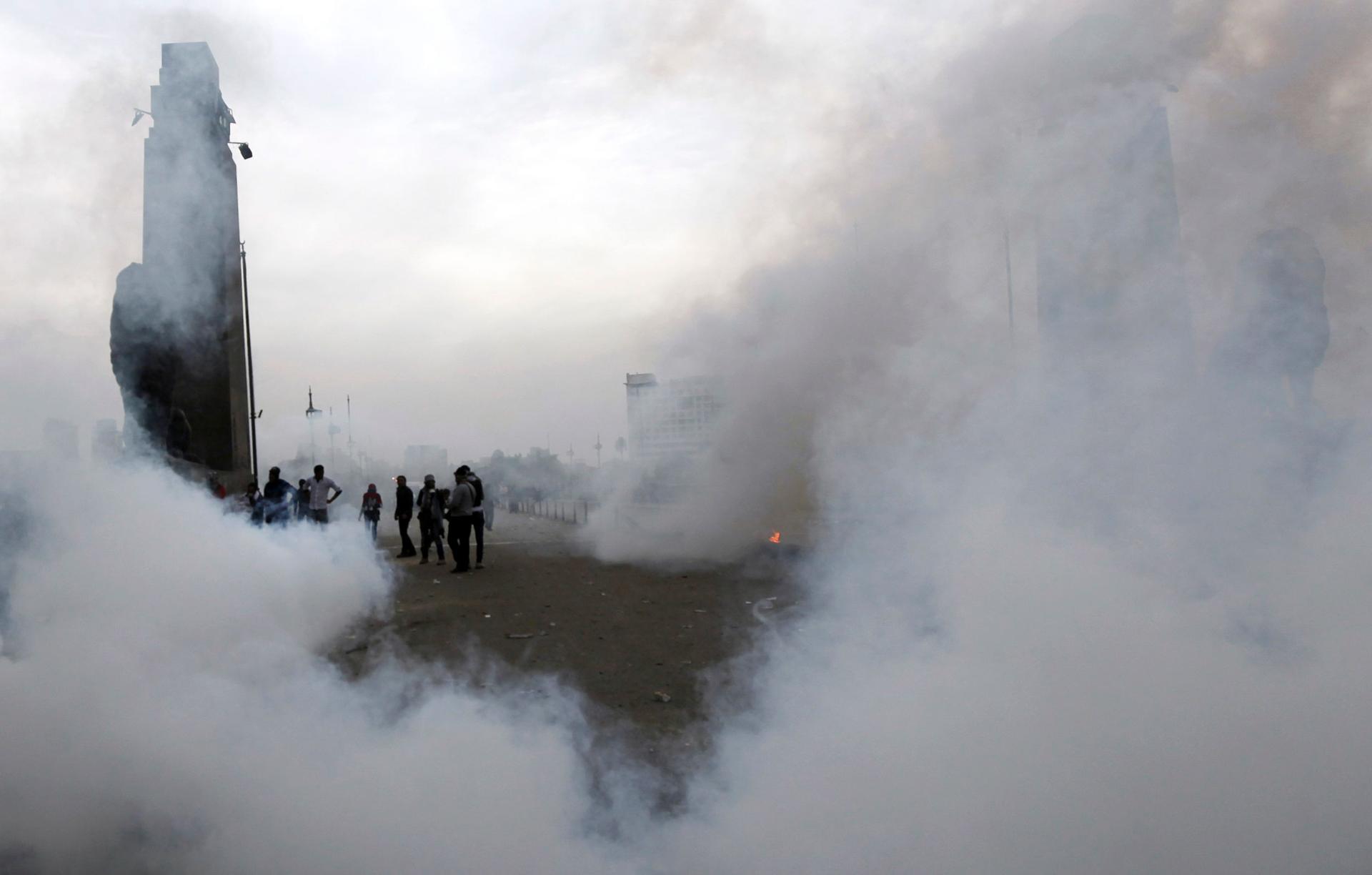
“The tear gas canisters kind of look like soda cans from a distance — silver, round,” he said. “A pastime activity for some people during the clashes was to pick up these tear gas canisters and read who is the country that has supplied these weapons to try and kill us. So, ‘Ah, look, this is American tear gas,’ or, “This is British tear gas,” or, ‘Oh no, they’re cheap, and they’re using Chinese tear gas now; they want to kill us.’”
Some of the canisters, he noticed, bore the brand name Combined Tactical Systems, an address in Jamestown, Pennsylvania, and the words, “Made in the USA.”
Combined Tactical Systems is a brand of the company Combined Systems, Inc., one of the world’s leading manufacturers of tear gas. The canister had come from their plant, just a half mile behind Terry Burns’ home on a country road, about an hour and a half north of Pittsburgh. On at least one occasion, Burns said, an accident at the plant leaked tear gas onto her property.
“It was a cloud of smoke coming our way,” she said. “You could tell it was something so unusual, dangerous, if you want to say.”
Burns was running a day care out of her home at the time. Schools were instructed not to let children home until the cloud had cleared, so Burns and the kids just waited, uncertain.
“I didn’t know what to do,” she said.
Accidental tear gas releases like that one have been rare in Jamestown, but there have been multiple fires at the plant over the years and test explosions can be heard multiple times a day. The plant doesn’t just test tear gas, but also other crowd control devices like smoke bombs and rubber bullets.
Still, Burns is glad it’s here.
“It’s just like anything else; people don’t want it in their backyard,” said Burns. “Is it better for our area? Probably. It brings in tax dollars and employment.”
Nonlethal weapons are a multibillion-dollar-a-year business and growing. The industry could be worth more than $9 billion by 2022, according to Allied Market Research, a company that does industry forecasting. CSI supplies not only Egypt, but also Israel, Bahrain and US police departments, like the one in Ferguson, Missouri.
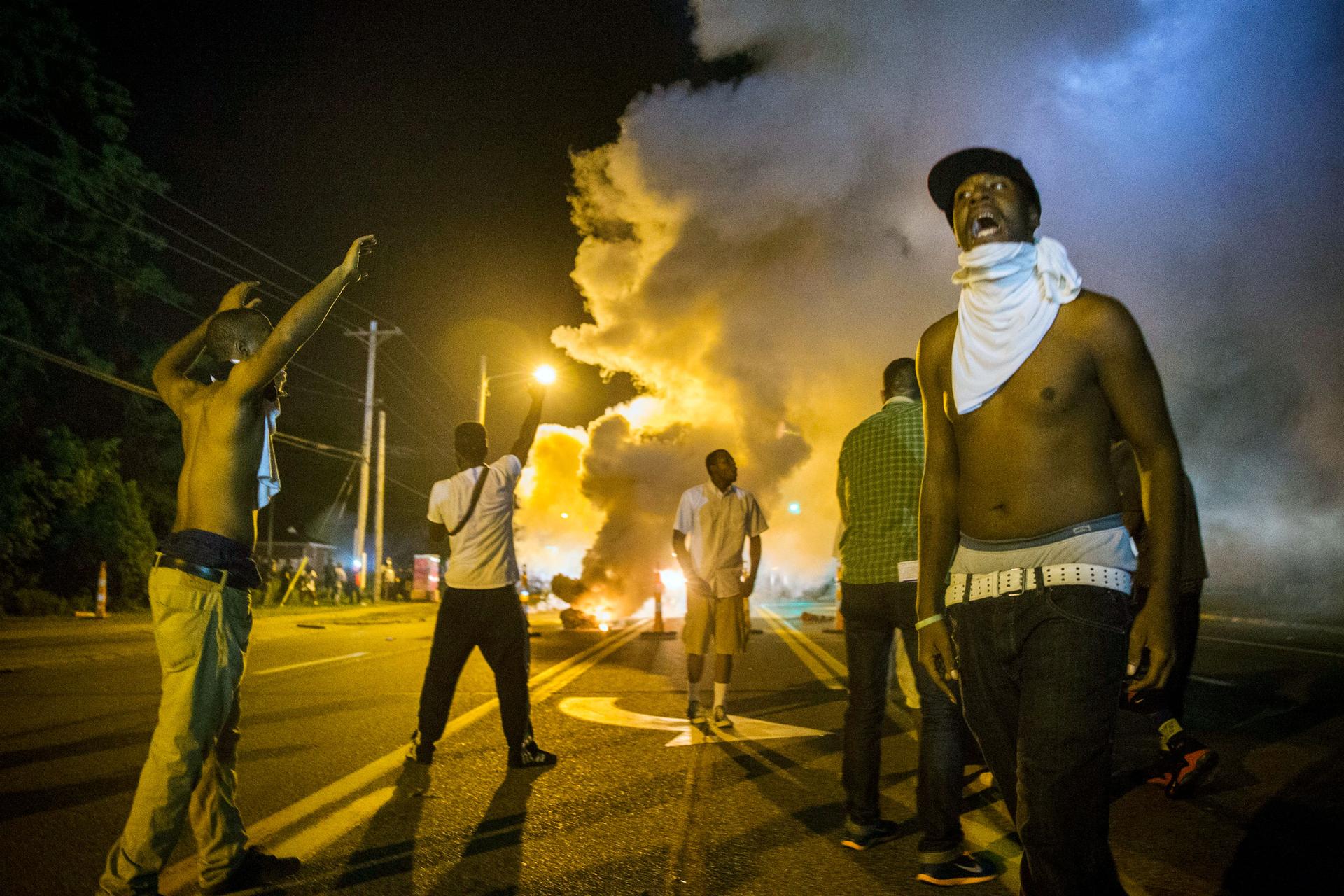
According to Amnesty International and internal letters published by the Egypt Independent newspaper, Combined Systems, Inc. shipped tens of thousands of rounds of tear gas to the Egyptian government between 2011 and 2013, even as the crackdown on protesters became more deadly. Backlash against tear gas grew as more was sent to the country. After a particularly brutal series of clashes in 2011, dock workers in Suez refused a shipment of tear gas from CSI, saying they did not want to participate in further pain or death.
“Almost everywhere [that] we see images of large-scale protest, we will see on the streets a Combined Systems, Inc. product,” said Anna Feigenbaum, who wrote a book on the history of tear gas.
It’s a common name for a family of chemical irritants, not actually gases, but fine powders dispersed by spray or aerosol. Tear gas doesn’t just make your eyes water; it causes a burning sensation, difficulty breathing, chest pain and skin irritation. It can lead to nausea and vomiting.
It’s considered a chemical weapon.
Developed by the French around WWI, tear gas was seen as less deadly than sarin or mustard gas. Germany, the US and other countries quickly replicated it.
“When the war ended, all these chemists and chemical companies had been enlisted in the war effort,” Feigenbaum said. “There was this desire to continue these industries during peacetime. In the US, it was marketed as war gases for peacetime use.”
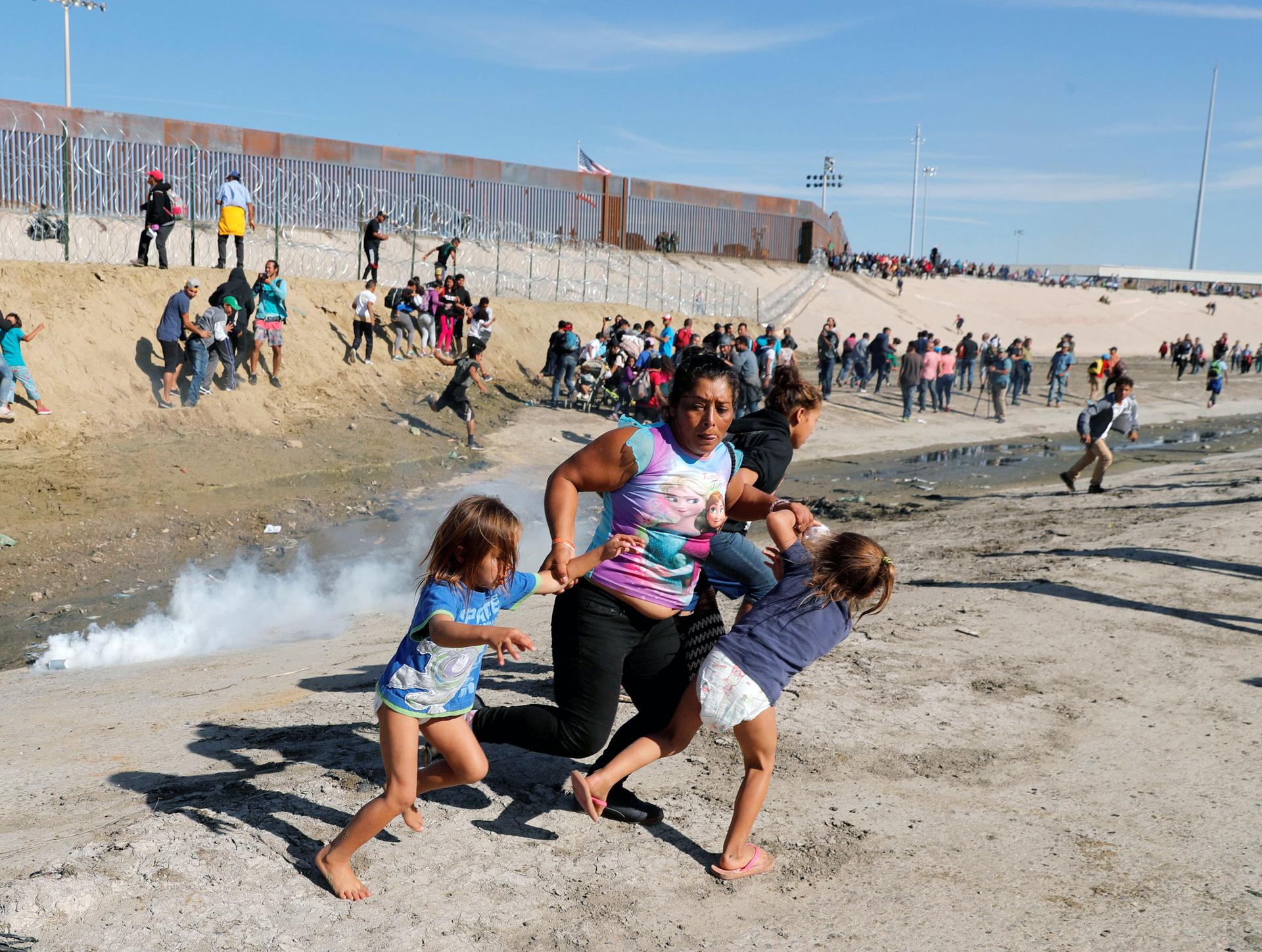
Companies like Dupont Chemical began to produce the gas and market it to police departments and prisons for riot control.
The 1993 Chemical Weapons Convention banned the use of tear gas in war, but many countries, including the US, still deploy it against domestic uprisings and unrest. Worldwide, the use of tear gas seems to be on the rise, but governments don’t track its use or those injured or killed when it’s used.
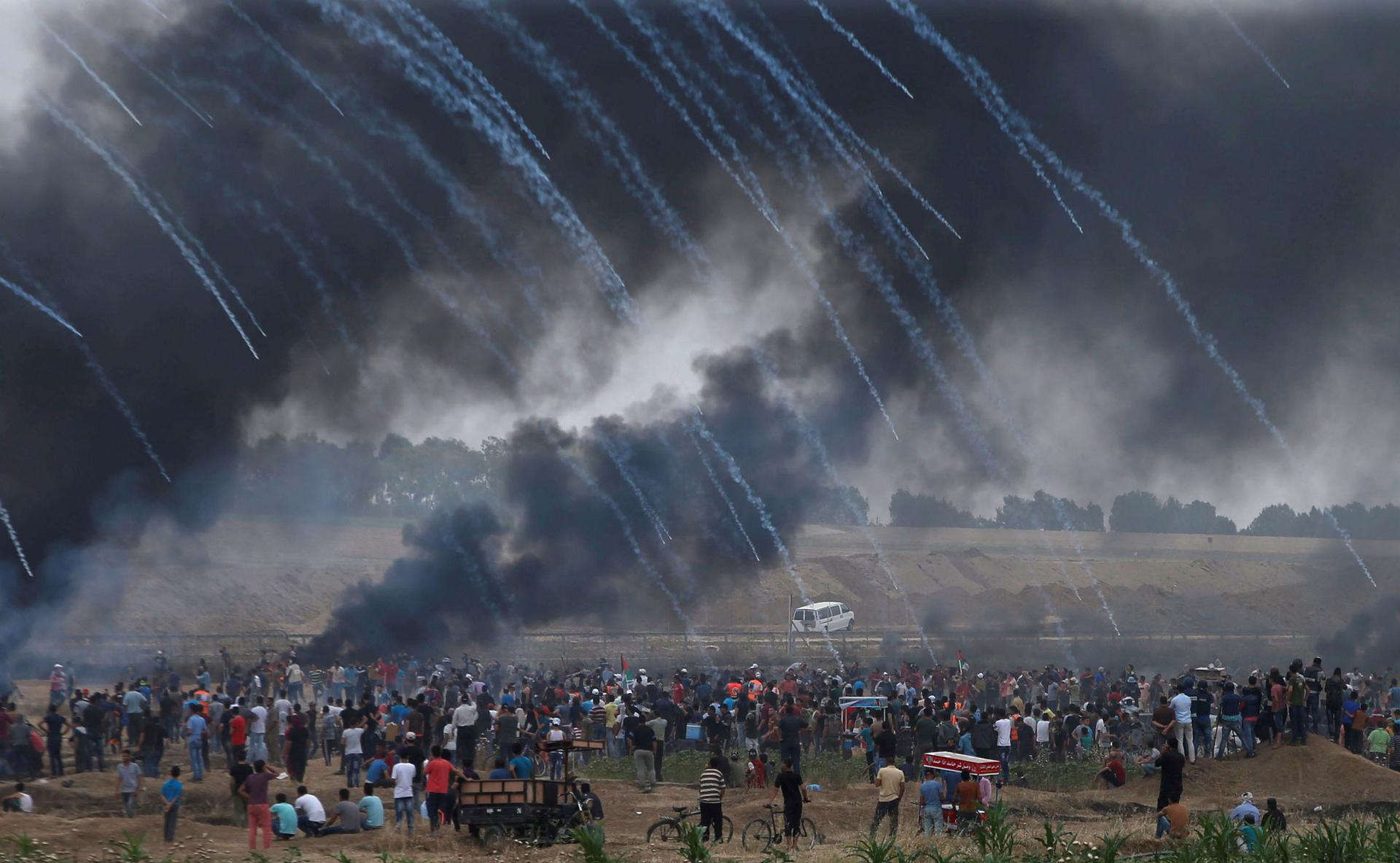
“The claim by the industry is that this industry is growing, that during 2011 where we had mass global protest, that sales in tear gas actually tripled, that we’re continuing to see market growth particularly in East Africa, in the Indian subcontinent — so, in places where there’s ongoing conflict, and where there’s less international and national regulation, that we’ve got growing markets,” Feigenbaum said.
That growth has been a boon for Jamestown, Pennsylvania. Combined Systems, Inc. set up shop there in 1995. Until CSI opened up, there weren’t many jobs in the area, said Jamestown borough council president Michael Reilly.
“We used to have a lumberyard, two lumberyards at one time,” he said. “There was probably 10 gas stations, two railroad stations in town; tracks going north, south, east and west. All that is gone. So, now, we have what we have, and there’s not much here.”
Today, there’s some tourism-related businesses because of a nearby state park. There’s a mill that makes paint. And then there’s CSI, which employs around 230 people.
“Something like that was just a godsend for a lot of people,” Reilly said. “In this area, there’s just not the work there used to be. We’ll take anything that comes in just to make people employed.”
CSI did not respond to requests for an interview. Workers at the plant say the jobs don’t pay well — less than $10 an hour. Workers have been injured in accidents reported in local press in 2012, 2013 and 2015. At least four plant fires have been reported in the last 15 years.
Still, Reilly says CSI is good for the community and that it’s important work.
“There’s a lot of times, like in Israel when they use their nonlethal bullets and their rubber bullets and their gas and that stuff, most of the time it comes from here,” he said. “Most of the people say, ‘Yep, we manufactured that, we put that together, we sent it.’ There’s a little bit of pride in that. Being that it’s nonlethal, that’s even better.”
Sid Heal, an expert in nonlethal weapons who has served more than 30 years in the Marine Reserves and the Los Angeles County Sheriff’s Department, has made it his life’s mission to increase nonlethal options for law enforcement and military. He’s even helped develop some, like a heat ray that makes a person feel like they’ve been scalded with hot water.
“Tear gas has been a godsend in that it’s truly nonlethal,” he said. “It’s very, very difficult to kill somebody.”
Yet, tear gas isn’t his favorite option. An ideal nonlethal weapon, he says, would be discriminating: It could be used to target just one person out of a crowd. It wouldn’t change the atmosphere or have lingering effects. The same dosage would work on anyone, regardless of their age, size or health status. It would live up, essentially, to an expectation set by “Star Trek,” which goes: “Set phasers to stun.”
Tear gas fails in all of those respects.
“I don’t like it; it has all kinds of problems,” Heal said. “It’s not an ideal. it’s just better than the alternative. People forget: The standard is not perfection. The standard is the alternative, and many times, the alternative is lethal force.”
But protesters have died from tear gas — in Egypt, in Gaza, in Bahrain. Some died from asphyxiation, when gas was fired in too concentrated a dose in too small a space. And some died from the canisters themselves. Noor himself spent days in the hospital after being struck by a canister just above his left eye.
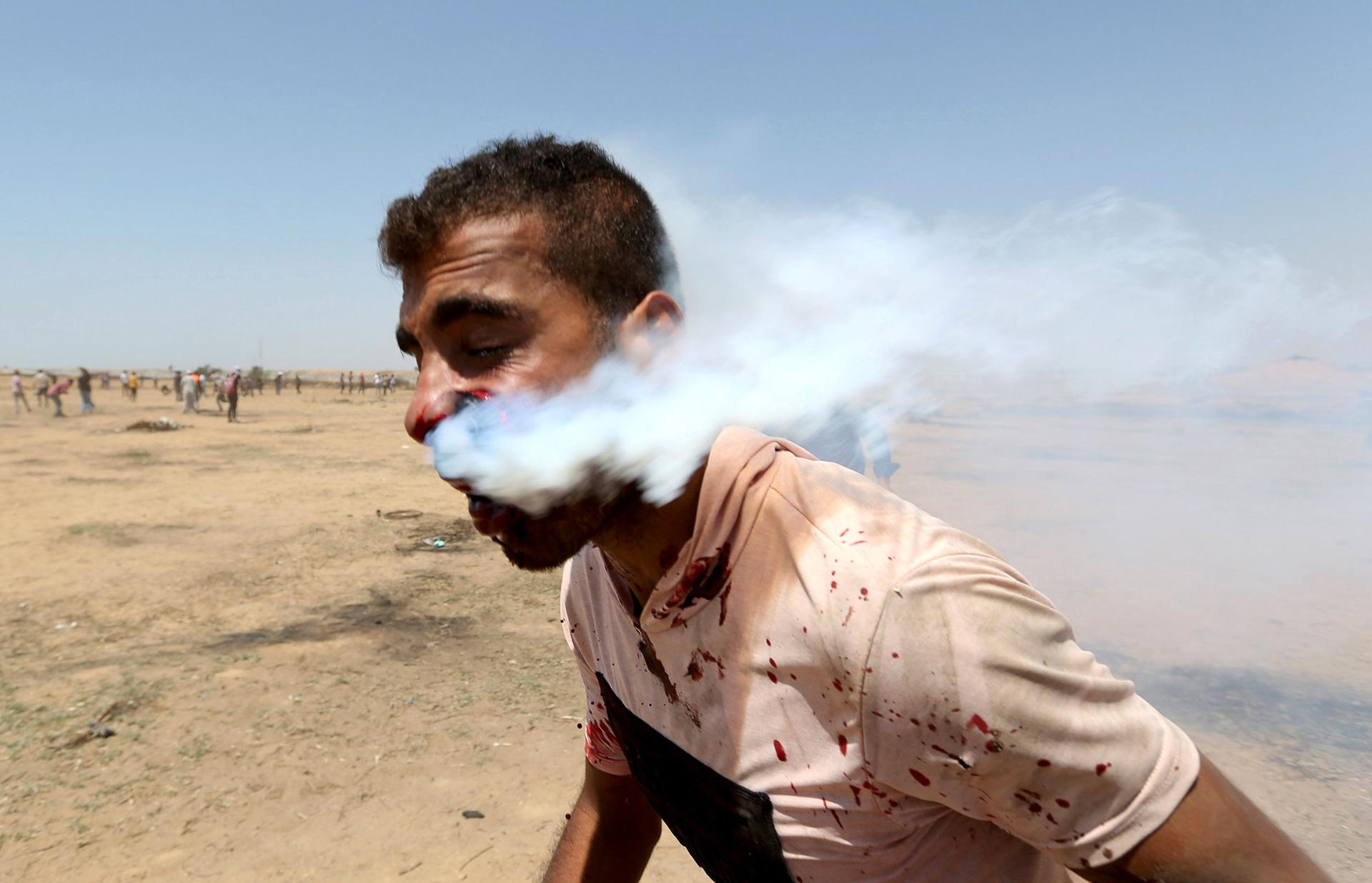
“Sometimes the tear gas was being fired head-on, head-on, to get people in the head, to get people in the groin. This was a common, common practice,” Noor said.
Heal says that’s a result of using the weapon incorrectly — canisters shouldn’t be aimed that way. Feigenbaum, who wrote the book on tear gas, rejects that.
“The idea that a weapon can be nonlethal is ridiculous,” she said. “To say that something which was designed to cause sensory torture and inflict pain, that we know has caused a lot of death, and that it’s actual, real-world use reveals it to be something that easily can be lethal, means certainly that calling it nonlethal should not be legal.”
Heal says the terms “nonlethal” and “less lethal” get used interchangeably in this industry, and he admits that’s confusing. But he says it boils down to intent: These weapons are designed to be less likely to kill.
“It’s really frustrating in the sense that our best efforts are not only marginalized, but ridiculed and scorned,” he said. “We are seen as indifferent, at best, and evil, at worst.”
But, given real-world deaths, Feigenbaum rejects the very idea of less-lethality in weaponry.
“Explain to me what a less lethal death is,” she said. “What does that mean, to die in a less lethal way?’”
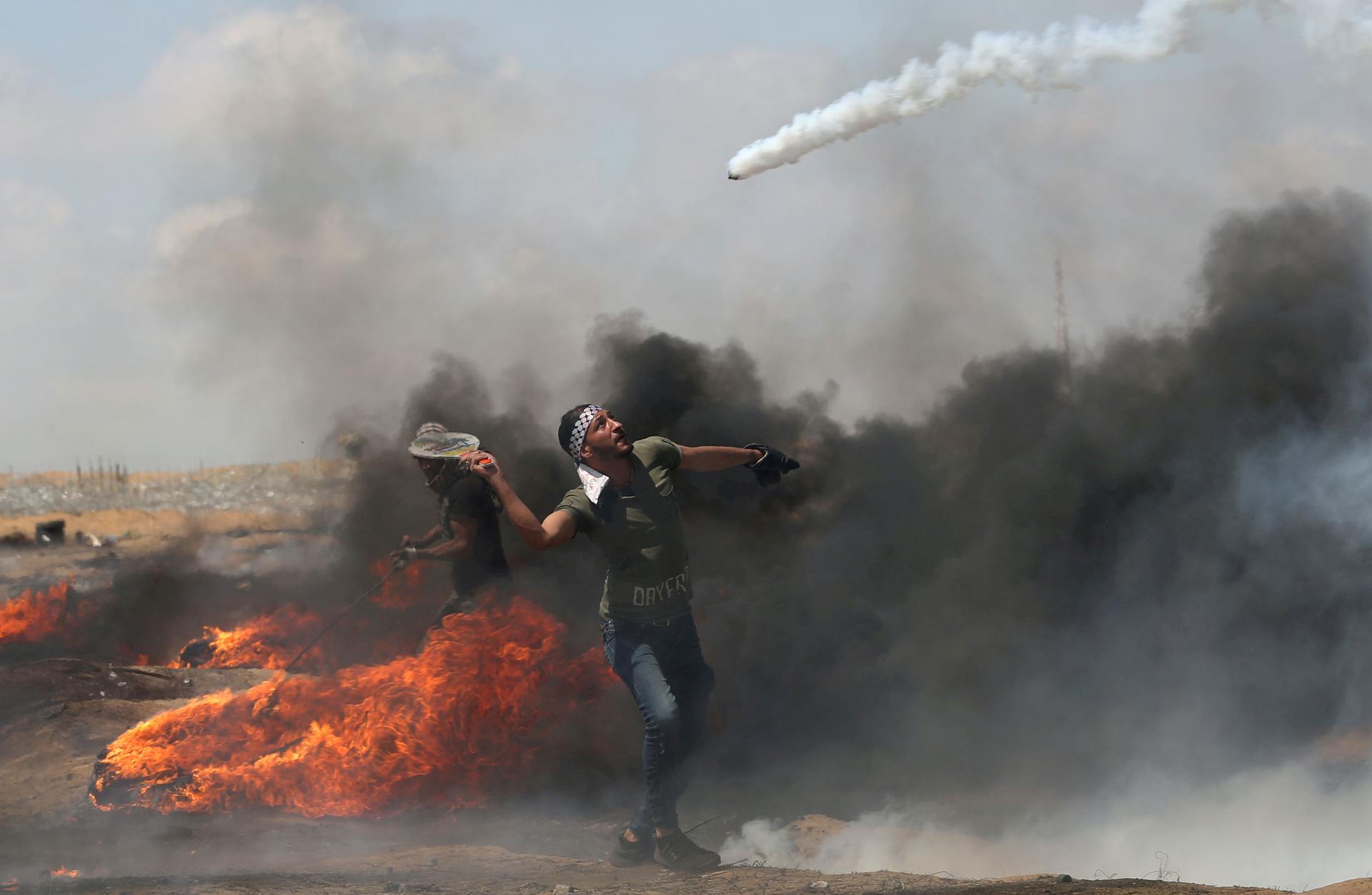
Governments don’t track fatalities by tear gas, so there’s no way of knowing how many people have died from it. In Tahrir Square, thousands died in other ways, killed by security forces. The uprising ended, the gas dissipated, but even now, Noor says he has conflicted memories of that time.
“What I’m about to describe now, might sound masochistic, but after a while sometimes you missed the gas,” he said.
During the uprising, he took home a canister and sealed it in a bag. And then, every once in a while, he would take the bag out and take a sniff or two, just to remember.
“If I had to describe it, I’d say it smells like Satan’s perfume,” Noor said.
He says it’s peppery, but that’s not enough. Others say it’s acidic or smells a bit like vinegar.
“Life is actually about encountering death regularly,” Noor said, “and the smell of tear gas was an instant reminder of that.”
